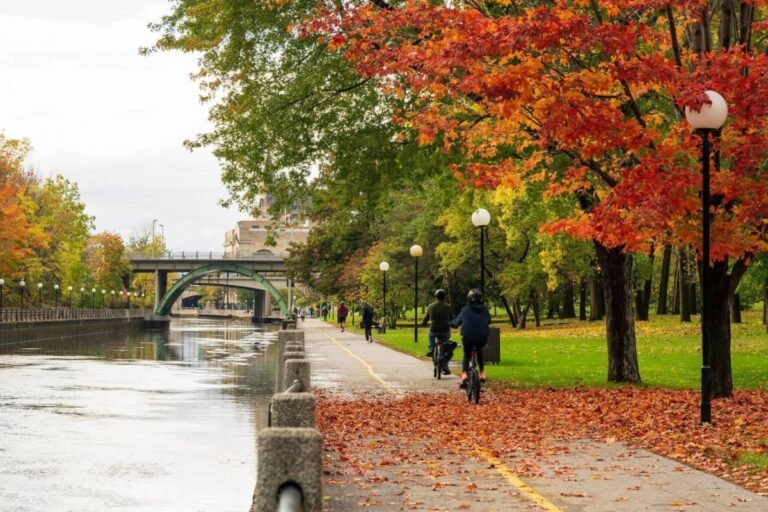Nestled in the heart of Toronto, the Distillery District stands as a preserved slice of Victorian industrial architecture, transformed into a thriving hub of cultural activity. This pedestrian-only zone, with its cobblestone streets and restored red brick buildings, encapsulates a unique blend of old-world charm and contemporary sophistication. From boutique shopping and gourmet dining to art galleries and seasonal festivals, the Distillery District offers a rich tapestry of experiences that attract both locals and tourists. This comprehensive exploration delves into the area’s history, its transformation into a cultural hotspot, and the myriad of activities and attractions it offers today.
A Stroll Through History: The Origins of the Distillery District
The Birth of a Landmark
Originally established in 1832 as the Gooderham and Worts Distillery, the site quickly grew to become one of the world’s largest distilleries, contributing significantly to the economic development of Toronto. Its location near Lake Ontario facilitated easy access to raw materials and distribution channels, accelerating the distillery’s growth.
Transformation into a Cultural Precinct
After the distillery ceased operations in the late 20th century, the area underwent a significant transformation. In the early 2000s, it was redeveloped into a dedicated arts, culture, and entertainment district. The careful preservation of its Victorian-era architecture has earned it acclaim as a National Historic Site of Canada, with the largest collection of industrial architecture from the Victorian period in North America.
The Architectural Splendor of the Distillery District
Preserving Victorian Industrial Architecture
The Distillery District’s charm is largely due to its well-preserved architecture. The buildings, constructed predominantly in the mid-19th century, showcase distinct Victorian-era design elements such as red brick construction, detailed masonry, and expansive windows. These architectural features not only evoke the era of industrial expansion but also provide a picturesque backdrop for the district’s modern-day activities.
A Canvas for Modern Expression
The juxtaposition of historic architecture with contemporary art installations and modern design elements infuses the district with a dynamic vibrancy. This blend of old and new makes the Distillery District a focal point for cultural activities and a favorite location for film and television productions seeking a unique historical setting with a modern twist.
Culinary Adventures and Artisanal Shopping
Diverse Culinary Offerings
The Distillery District is renowned for its diverse range of dining options, which include casual cafes, fine dining restaurants, and everything in between. Culinary enthusiasts can enjoy a variety of cuisines, from Italian and French bistro fare to Asian fusion and artisanal bakeries. Restaurants like El Catrin Destileria, with its authentic Mexican cuisine and vibrant décor, and Cluny Bistro & Boulangerie, known for its French-inspired menu, are just a couple of the standout dining experiences available.
Boutique Shopping Experience
The district also boasts an array of boutique shops that offer unique and often locally made products. These range from art galleries and fashion boutiques to specialty stores offering handcrafted chocolates, bespoke jewelry, and artisanal spirits. Shopping in the Distillery District is characterized by a focus on quality and originality, reflecting the area’s overall artistic and entrepreneurial spirit.
Arts, Culture, and Entertainment
Thriving Arts Scene
The Distillery District serves as a significant arts and culture hub in Toronto, hosting numerous galleries, theaters, and artists’ studios. The area is home to the renowned Soulpepper Theatre Company, which provides compelling theatrical performances year-round. Additionally, art lovers can explore galleries like the Thompson Landry Gallery, which specializes in Quebecois art, offering both traditional and contemporary pieces.
Festivals and Events
Throughout the year, the Distillery District is animated by a series of events and festivals that reflect Toronto’s cultural diversity and artistic vitality. The Toronto Christmas Market, one of the city’s most popular holiday events, transforms the district into a magical winter wonderland with vendors, musicians, and festive decorations. Other notable events include art shows, food festivals, and outdoor concerts, making the Distillery District a lively destination throughout the seasons.
Planning Your Visit
When to Visit
The Distillery District is captivating year-round, but visiting during one of its many festivals can provide an especially memorable experience. Summer and winter are particularly vibrant seasons here, with the Christmas Market and summer arts festivals drawing large crowds.
Tips for Visitors
- Accessibility: The district is fully accessible, featuring flat cobblestone streets and accessible buildings.
- Transportation: Easily reachable by public transit, visitors can take the Toronto Transit Commission (TTC) streetcar or bus to the area. Parking is available but limited.
- Accommodations: While there are no accommodations within the district itself, numerous hotels are located nearby in downtown Toronto.
Conclusion
The Distillery District is more than just a historical site; it is a living, breathing part of Toronto that offers a unique blend of the past and the present. It serves as a sanctuary for artists, a haven for foodies, and a paradise for shoppers, all set within the evocative surroundings of its Victorian industrial architecture. Whether you’re seeking culinary delights, artistic inspiration, or just a pleasant day out, the Distillery District promises an enriching and enjoyable experience.



